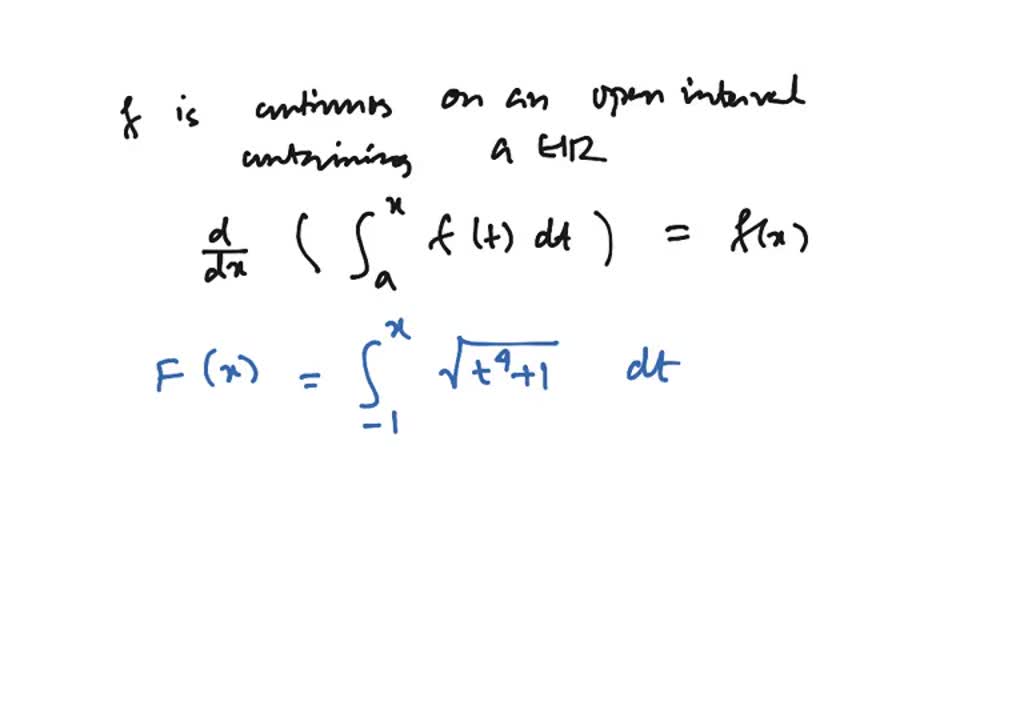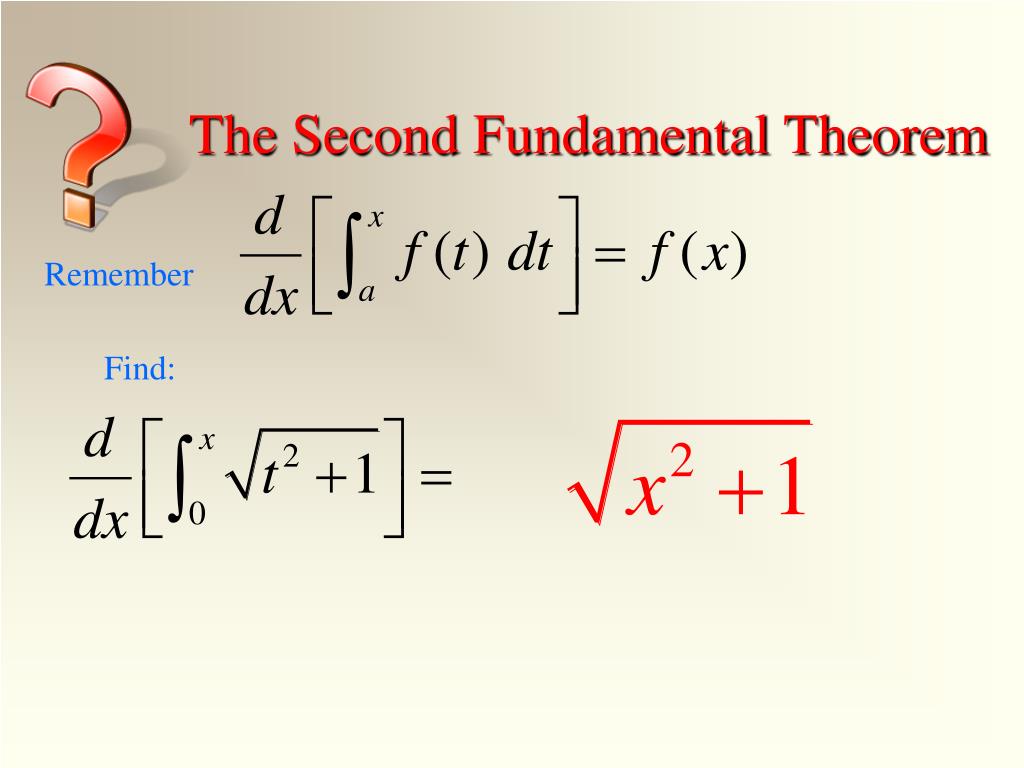

= ∫ a c f ( t ) d t + ∫ c b f ( t ) d t

Using the properties of the definite integral found in Theorem 5.2.1, we know First, let F ( x ) = ∫ c x f ( t ) d t. Suppose we want to compute ∫ a b f ( t ) d t. Consider a function f defined on an open interval containing a, b and c. Wingsuit flyers still use parachutes to land although the vertical velocities are within the margin of safety, horizontal velocities can exceed 70 mph, much too fast to land safely.We have done more than found a complicated way of computing an antiderivative. (Indeed, the suits are sometimes called “flying squirrel suits.”) When wearing these suits, terminal velocity can be reduced to about 30 mph (44 ft/sec), allowing the wearers a much longer time in the air.

#Fundamental theorem of calculus part 2 free#
These suits have fabric panels between the arms and legs and allow the wearer to glide around in a free fall, much like a flying squirrel. Some jumpers wear “ wingsuits” (see Figure 6). If she begins this maneuver at an altitude of 4000 ft, how long does she spend in a free fall before beginning the reorientation? Before pulling her ripcord, Julie reorients her body in the “belly down” position so she is not moving quite as fast when her parachute opens.How long does it take Julie to reach terminal velocity in this case?.Answer these questions based on this velocity: Her terminal velocity in this position is 220 ft/sec. On Julie’s second jump of the day, she decides she wants to fall a little faster and orients herself in the “head down” position. Find the total time Julie spends in the air, from the time she leaves the airplane until the time her feet touch the ground. After her canopy is fully open, her speed is reduced to 16 ft/sec. It takes 5 sec for her parachute to open completely and for her to slow down, during which time she falls another 400 ft. If Julie pulls her ripcord at an altitude of 3000 ft, how long does she spend in a free fall?.Based on your answer to question 1, set up an expression involving one or more integrals that represents the distance Julie falls after 30 sec.How long after she exits the aircraft does Julie reach terminal velocity?.Using this information, answer the following questions. On her first jump of the day, Julie orients herself in the slower “belly down” position (terminal velocity is 176 ft/sec). After she reaches terminal velocity, her speed remains constant until she pulls her ripcord and slows down to land. She continues to accelerate according to this velocity function until she reaches terminal velocity. After she exits the aircraft, she immediately starts falling at a velocity given by v(t)=32t. Julie executes her jumps from an altitude of 12,500 ft. Since Julie will be moving (falling) in a downward direction, we assume the downward direction is positive to simplify our calculations. If, instead, she orients her body with her head straight down, she falls faster, reaching a terminal velocity of 150 mph (220 ft/sec). If she arches her back and points her belly toward the ground, she reaches a terminal velocity of approximately 120 mph (176 ft/sec).

She has more than 300 jumps under her belt and has mastered the art of making adjustments to her body position in the air to control how fast she falls. Skydivers can adjust the velocity of their dive by changing the position of their body during the free fall. For example, if this were a profit function, a negative number indicates the company is operating at a loss over the given interval.įigure 5. Area is always positive, but a definite integral can still produce a negative number (a net signed area). Note that the region between the curve and the x-axis is all below the x-axis. The region of the area we just calculated is depicted in Figure 3. This always happens when evaluating a definite integral. If we had chosen another antiderivative, the constant term would have canceled out. So, for convenience, we chose the antiderivative with C=0. The reason is that, according to the Fundamental Theorem of Calculus, Part 2, any antiderivative works. Notice that we did not include the “+ C” term when we wrote the antiderivative.


 0 kommentar(er)
0 kommentar(er)
